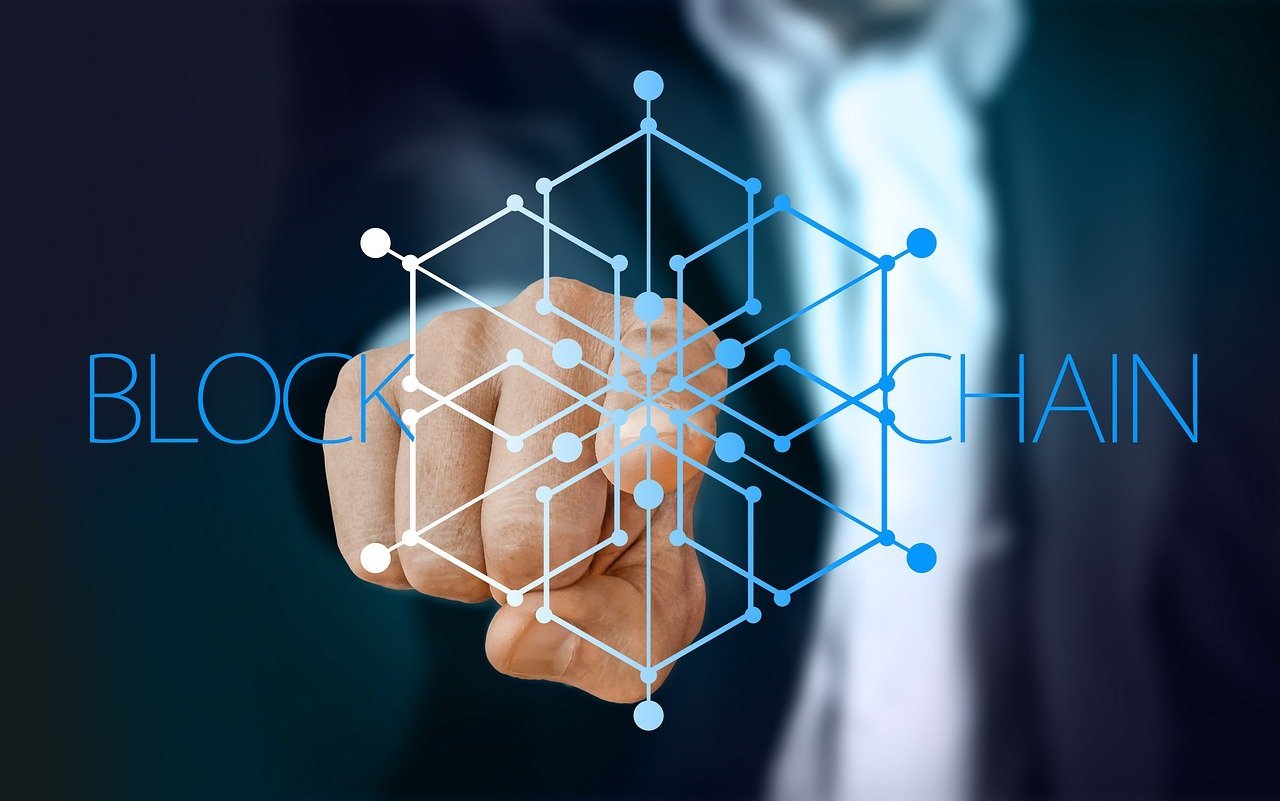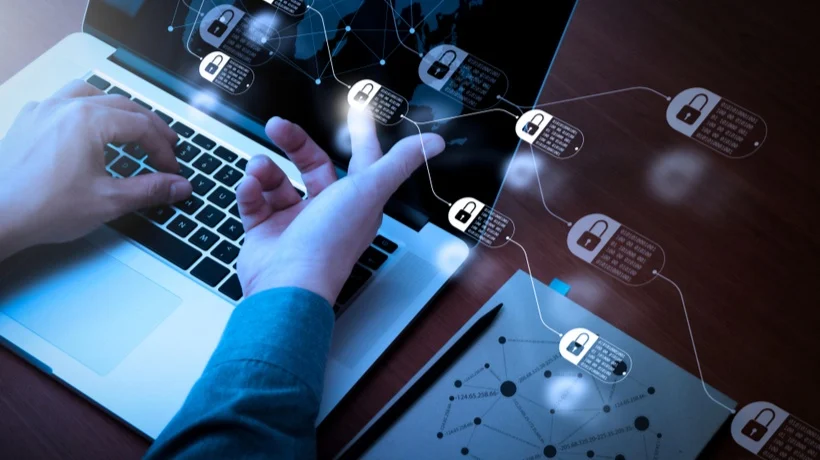Demystifying Blockchain in 2023: The Key to Secure and Transparent Transactions

Blockchain technology has gained significant attention in recent years as a powerful tool for ensuring secure and transparent transactions. This revolutionary technology has the potential to transform various industries and streamline processes. In this article, we will explore the Demystifying Blockchain in 2023: The Key to Secure and Transparent Transactions, key features, applications, advantages, and challenges. By the end, you’ll have a clearer understanding of how blockchain is reshaping the future of transactions.
Blockchain, at its core, is a decentralized digital ledger that records transactions across multiple computers. Each transaction is stored in a “block,” which is then linked to previous blocks, forming a “chain.” This distributed ledger technology eliminates the need for a central authority, ensuring transparency and security in transactions.
In today’s digital landscape, where cyber threats are prevalent, secure and transparent transactions are of utmost importance. Blockchain addresses these concerns by providing a tamper-proof and auditable system that can be applied to various domains beyond cryptocurrencies.
Read more: Top Secrets to Unlocking the Power of Blockchain in 2023
How does blockchain work?

Blockchain’s functionality relies on three fundamental components: distributed ledger technology, blocks, and chains, and a consensus mechanism. First, let’s dive into distributed ledger technology.
Distributed ledger technology
Unlike traditional centralized databases, blockchain operates on a distributed ledger system. This means that copies of the ledger are maintained across multiple computers or nodes, ensuring redundancy and resilience. This decentralized approach enhances security by eliminating a single point of failure.
Blocks and chains
Transactions in blockchain are grouped into blocks, each containing a unique identifier, a list of transactions, and a reference to the previous block. These blocks are linked together in a sequential order, forming a chain. As new transactions occur, they are added to the latest block, making the entire chain resistant to alteration.
Consensus mechanism
To maintain the integrity of the blockchain, a consensus mechanism is employed. This mechanism ensures that all participants agree on the validity of transactions before they are added to the chain. Popular consensus mechanisms include Proof of Work (PoW) and Proof of Stake (PoS), each with its own strengths and weaknesses.
Key features of blockchain

Blockchain offers several key features that contribute to its secure and transparent nature.
Security and immutability
One of the most notable features of blockchain is its robust security. Once a transaction is recorded in a block and added to the chain, it becomes virtually immutable. Altering a single block would require a massive amount of computational power, making it highly impractical and costly for malicious actors.
Transparency and auditability
Blockchain provides transparency by allowing anyone to view the entire transaction history. Every transaction is recorded in a public ledger, accessible to all participants. This level of transparency enhances trust and enables efficient auditing processes.
Decentralization
Decentralization is a core principle of blockchain. By removing the need for a central authority, blockchain empowers participants to have direct control over their transactions. This eliminates intermediaries, reducing costs and increasing efficiency.
Smart contracts
Smart contracts are self-executing contracts with predefined rules encoded on the blockchain. These contracts automatically enforce the terms and conditions agreed upon by the involved parties. Smart contracts enable automation, streamlining processes, and reducing the need for intermediaries.
Applications of blockchain

Blockchain technology has found applications in various industries, revolutionizing processes and enhancing security.
Cryptocurrencies and digital assets
Blockchain gained prominence through its association with cryptocurrencies like Bitcoin and Ethereum. These digital currencies utilize blockchain technology to enable secure and decentralized transactions, providing an alternative to traditional financial systems.
Supply chain management
Blockchain’s transparent and immutable nature makes it an ideal solution for supply chain management. By recording each step of the supply chain on the blockchain, stakeholders can easily track and verify the origin, authenticity, and movement of goods. This reduces fraud, counterfeiting, and improves overall efficiency.
Healthcare records
In the healthcare industry, blockchain has the potential to transform record-keeping and data sharing. By securely storing patient records on the blockchain, healthcare providers can ensure data integrity, streamline interoperability, and enhance patient privacy.
Voting systems
Blockchain can address the challenges of traditional voting systems by providing a secure and transparent platform. By recording votes on the blockchain, governments can ensure the integrity of elections, eliminate voter fraud, and enhance public trust in the democratic process.
Advantages and challenges of blockchain

Advantages
Blockchain offers numerous advantages that make it an attractive technology for various industries. Some key advantages include:
- Enhanced security and immutability
- Increased transparency and trust
- Cost reduction through decentralization
- Automation and efficiency through smart contracts
Challenges
While blockchain holds great promise, it also faces several challenges that need to be addressed for widespread adoption. These challenges include:
- Scalability limitations
- Energy consumption in certain consensus mechanisms
- Regulatory and legal considerations
- Interoperability between different blockchain networks
Future trends and developments in blockchain
As blockchain technology evolves, several trends and developments are shaping its future.
Interoperability
Interoperability aims to connect different blockchain networks, allowing seamless communication and data transfer. This development is crucial for widespread adoption and the integration of blockchain into existing systems.
Scalability
Scalability is a critical factor for blockchain’s success. As more transactions are processed, the need for scalable solutions becomes apparent. Various approaches, such as sharding and layer-two solutions, are being explored to address scalability challenges.
Privacy enhancements
Blockchain is often associated with transparency, but privacy remains a concern in certain use cases. Innovations like zero-knowledge proofs and privacy-focused blockchains are emerging to address privacy concerns while still maintaining the core principles of blockchain.
Read more: The Role of Blockchain in Cyber security in 2023
Conclusion
Blockchain technology has revolutionized the way transactions are conducted, offering secure and transparent solutions in various industries. Its decentralized nature, coupled with features like security, transparency, and smart contracts, makes it a powerful tool for the future. However, challenges remain, and ongoing developments are required to address scalability, privacy, and interoperability concerns. As we move further into 2023 and beyond, blockchain will continue to reshape the digital landscape and pave the way for a more secure and transparent future.
FAQs
What is blockchain?
Blockchain is a decentralized digital ledger that records transactions across multiple computers. It ensures secure and transparent transactions by eliminating the need for a central authority.
How does blockchain ensure security?
Blockchain ensures security through its tamper-proof and immutable nature. Once a transaction is recorded and added to the blockchain, it becomes extremely difficult to alter or tamper with.
What are smart contracts?
Smart contracts are self-executing contracts with predefined rules encoded on the blockchain. They automatically enforce the terms and conditions agreed upon by the involved parties.
Can blockchain be used in healthcare?
Yes, blockchain has significant applications in healthcare. It can securely store patient records, streamline interoperability, and enhance data privacy in the healthcare industry.
What are the challenges of blockchain implementation?
Some challenges of blockchain implementation include scalability limitations, energy consumption in certain consensus mechanisms, regulatory considerations, and interoperability between different blockchain networks.







![Is 300 Mb of Fiber Too Much or Too Little For Me? [Guide]](https://www.techknowable.com/wp-content/uploads/2023/02/cable-network-fiber-optic-cable-connect-to-switch-port-in-server-room-concept-network-management-free-photo-390x220.jpg)



